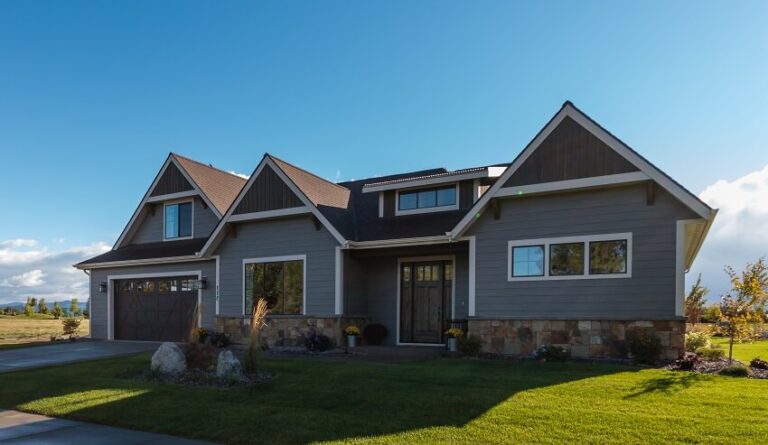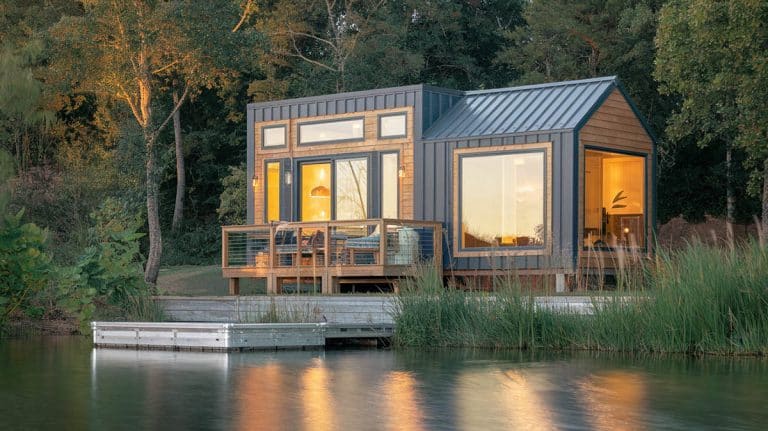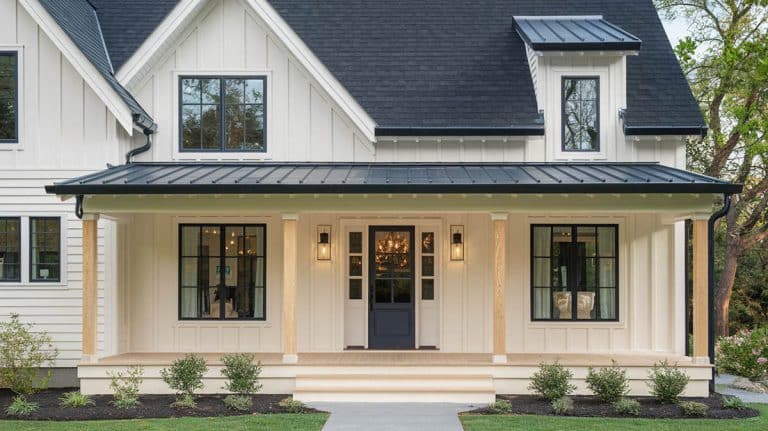Flat Roof Pros and Cons (What You Need To Know)
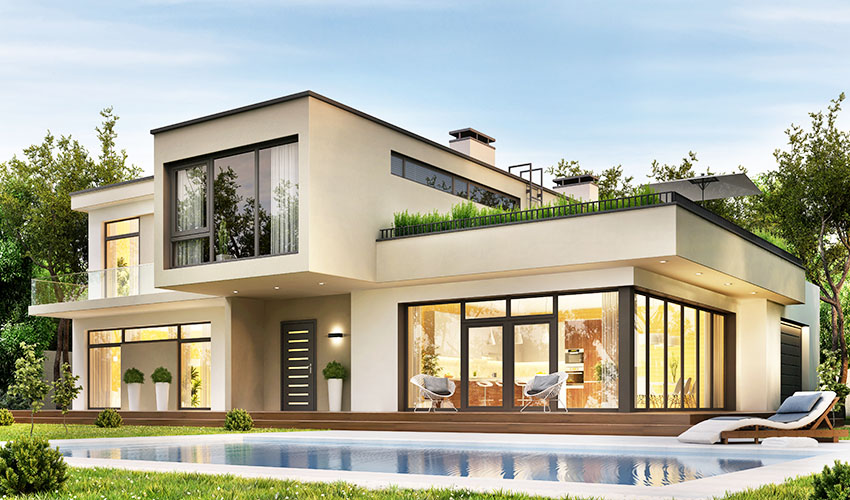
Flat roofs are often seen on institutional, industrial, or commercial buildings mostly because they are easier to install on larger areas and surfaces. Can a flat roof be used on residential lots?
Recent trends in the home design and architect world have shifted towards the more modern, minimalist design over the traditional brick and white picket fence house. Calling for a roofing option outside of the more conventional sloped or pitched roof has increased the use of flat roofs on residential homes.
This article discusses the pros and cons of choosing a flat roof for your home.
What is a Flat Roof?
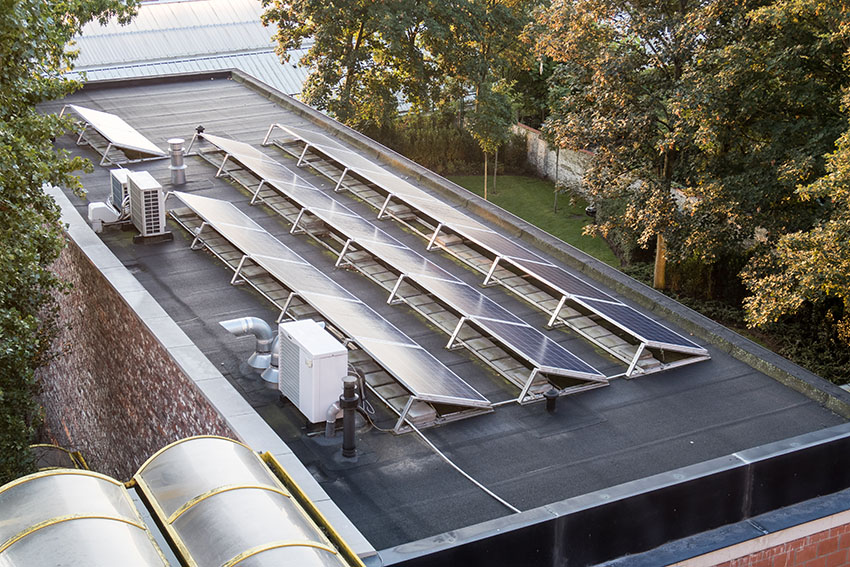
Flat roofs are a roof type that is almost entirely level but has a slight middle roof pitch of between 1/2 or 1/4 inch per foot. Just enough to let the water flow to the sides in case of rain.
Flat roofs are often seen on commercial buildings, but with current modern design trends, flat roofs are now being used for residential lots.
There are various types of flat roofs, and you can choose from either of them depending on your budget and your needs.
There is a built-up roof that is made with multiple layers of asphalt and ply sheets. Build-up roofs are very durable, and in hot weather, you can coat your roof with reflective paint to save on utility cooling costs.
You can choose the modified bitumen roofing that is cost-efficient, very durable, but labor-intensive. This roof type can last up to 20 years without replacement with proper upkeep and repair.
There is also a rubber membrane roof that is user-friendly and easy to patch when a problem occurs.
Here’s the pros and cons of a flat roof starting with the benefits.
Pros
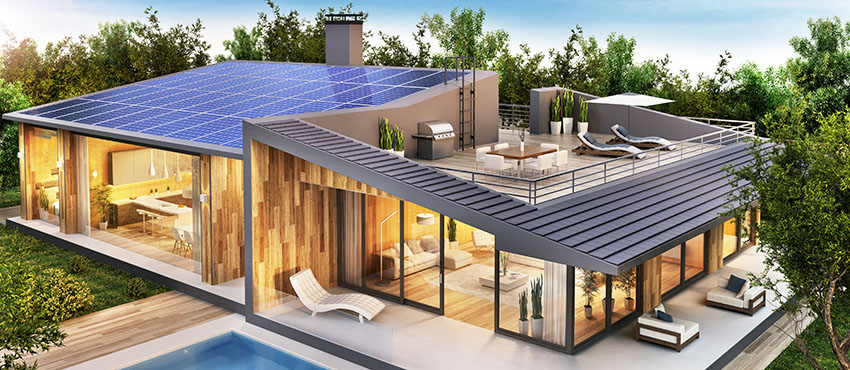
There are several benefits when choosing a flat roof for a home, and one is the lower cost of construction because it uses less space and fewer materials than its counterpart of sloped roofs.
There is also the advantage concerning construction as the flat roof is easier to install, meaning constructing a new house or renovating one will take less time.
Flat roofs are also the most energy-efficient option. Unlike sloped roofs that trap warm air, a flat roof takes less space; thus, the air has less room to linger in — making the flat roofing suitable for places with hot weather.
Flat roofs are ideal for constructing a roof deck, space to install solar panels, or even a rooftop nursery. The flat surface top makes it perfect for outdoor areas such as these, especially for homes lacking the space for a front or a backyard.
Flat roofs are also much easier to repair and maintain compared to sloped ones. Looking for leaks on your ceilings, cleaning the gutters, and even clearing out a night’s worth of snow is made safer.
Cons
Flat roof construction in colder weather is less than ideal. Melted snow can accumulate on the roof and can be dangerous to clear out in case of ice. It also can add additional ice weight to your roof that could be dangerous in more significant amounts.
Poorly installed flat roofs can cause puddles to build on top after a day or two of heavy rain, which can cause leaves and branches to build up without proper cleanup. It’s essential to have a reputable contractor to avoid problems such as this.
In the case of materials to choose from, a sloped roof has an advantage. Flat roofs materials can either be TPO, EPDM, bitumen, or rubber. They are inexpensive materials but only can last ten to fifteen years without upgrades or replacement.
Flat-Roof House Problems
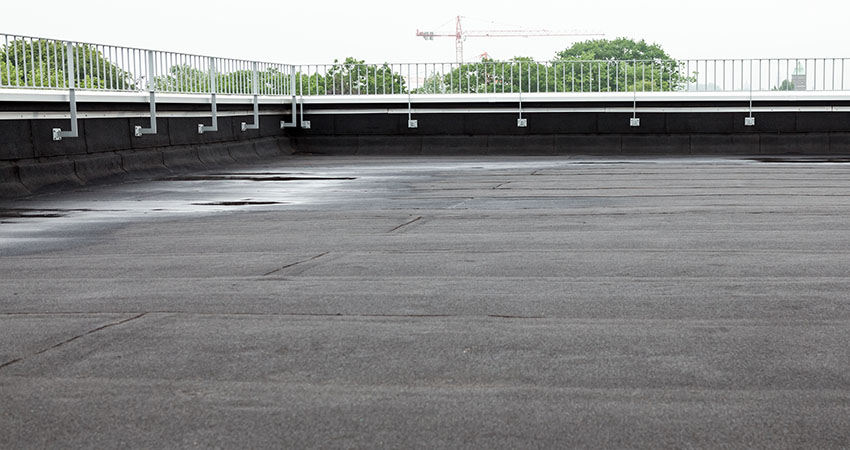
In ensuring that your flat roof will last longer, here are some common flat roof house problems to look out for.
Alligatoring is a flat roof phenomenon where cracks and bubbles form, resembling alligator skin. This problem means that the flat roof is crumbling and needs replacing.
Moisture that will end up as leaks is a common problem with flat roofs. Leaks are usual for roofs through time, but leaks have nowhere to go but straight down with flat roofs.
As stated in the disadvantage section, flat roofs are prone to pooling water, especially during rainy seasons. Most flat roof materials are made to handle water, but it’s no sweat to check from time to time.
Flat roofs are prone to expand and contract with wear like most materials. Over time, this expansion can cause problems like moisture build-up that could leak if left for long periods.
Cost
Flat roof costs are computed per one hundred square feet. Flat roofs prices are estimated to cost somewhere from $350 to $1200 per 100 sq ft. for higher-end materials such as metal roofing, concrete slab or reinforced concrete.
It also advised to consult a professional roofer for the entire cost because sometimes there are additions, such as a custom gable, labor or even a delivery fee.
How Long Does a Flat-Roof Last?
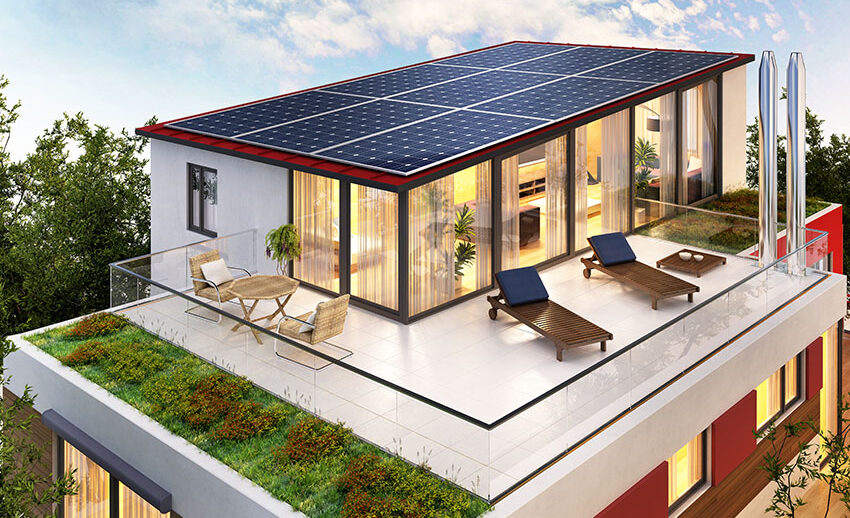
A lot of factors can affect the longevity of a flat roof. First, the quality of the build and the building materials used in constructing the flat roof. The main problem regarding this is the materials for flat roofs are limited, especially for drainage compared to the more usual sloped roofs.
The first build before the renovation or the repairing is also essential. The flat roof needs a proper foundation. Not only does it minimize the possibility of a replacement, but it drastically pulls down the cost for future repair. Make sure that the roofing is done by a professional roofing company or a known and trusted contractor.
Can You Shingle This Roof?
As much as possible, putting shingles on a flat roof is not advisable. Shingles are layered and are placed on top of each other since flat roofs do not have a steep pitch like the more traditional sloped or pitched roof, it would be impossible to put the shingles the way they are made to be placed on roofs.
The good news is there are many other roofing materials to be used in the place of shingles like TPO, PVC, EPDM rubber, and even tiles.
Interestingly, flat roofs aren’t completely flat and do have a slight pitch to help prevent water from collecting. For areas with adverse weather conditions a pitched roof may be a better option to avoid costly repairs and issues related to water seeping in to the roof slab.
For more related content about the flat roof pros and cons, check out our article about black roof shingles pros and cons on this page.

